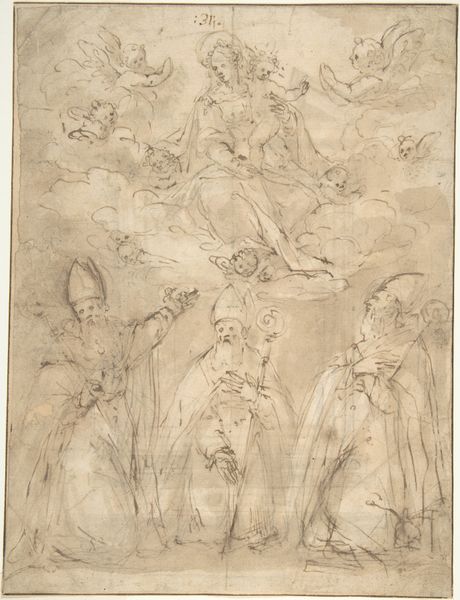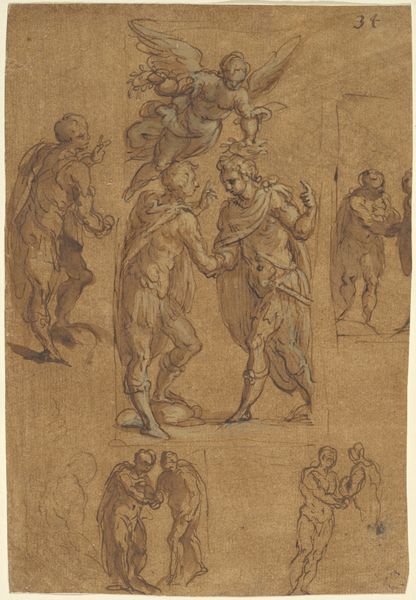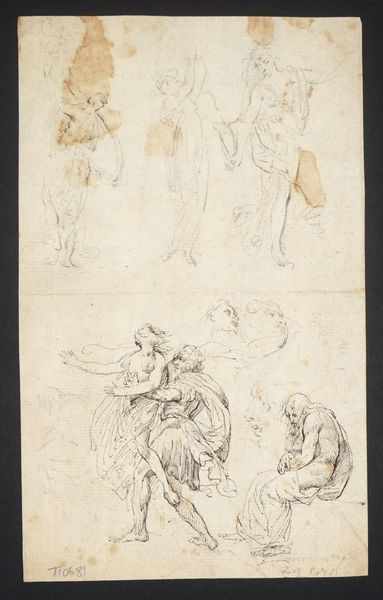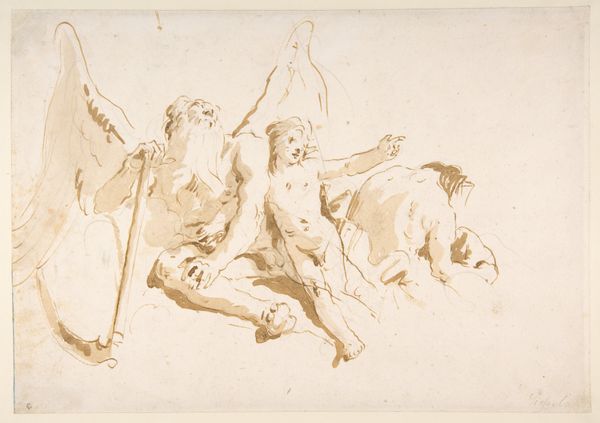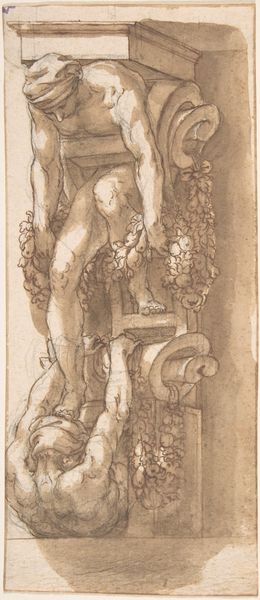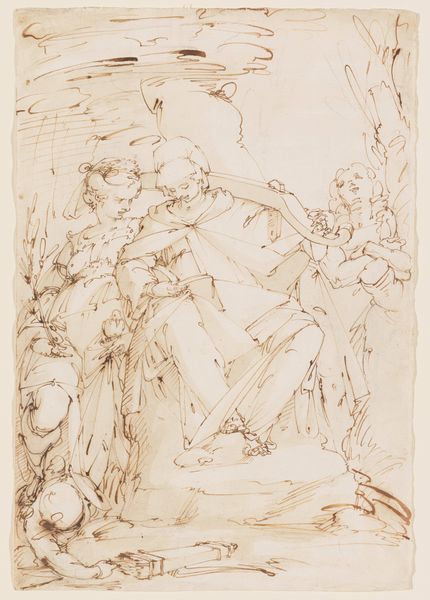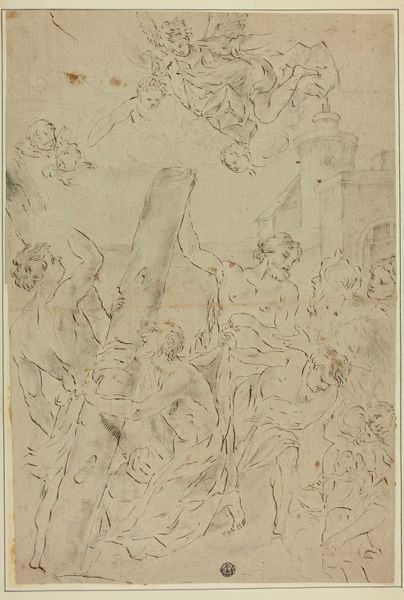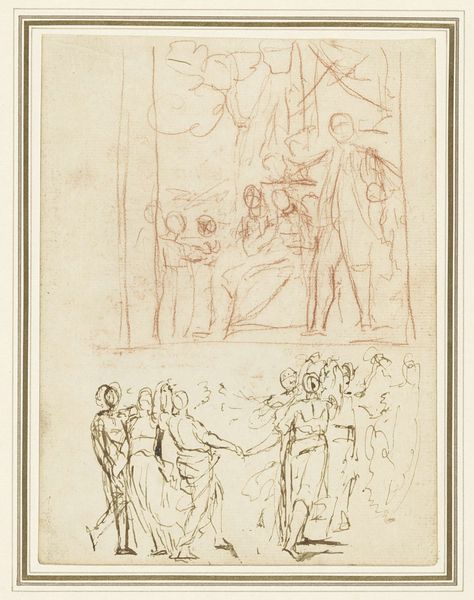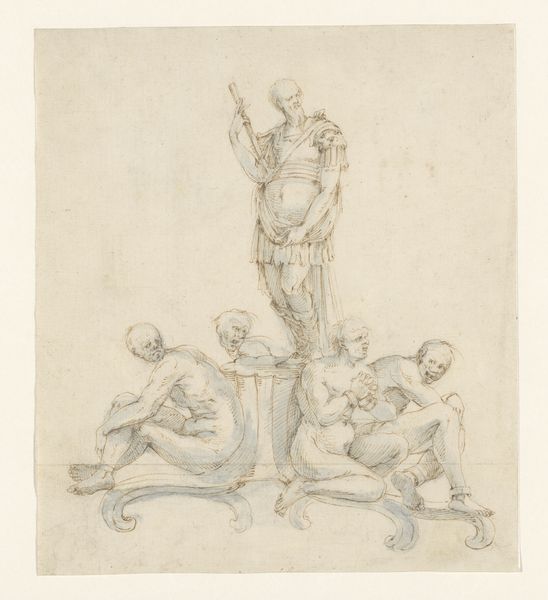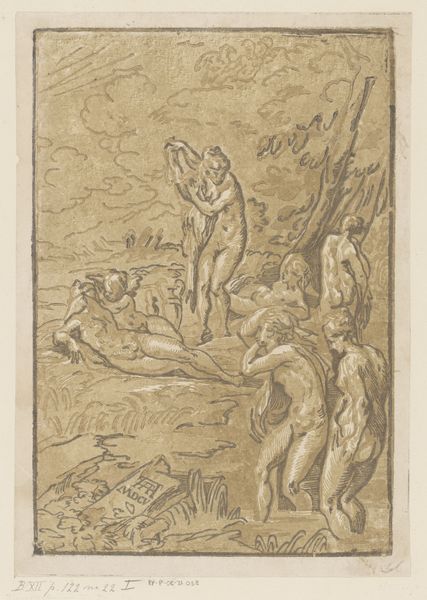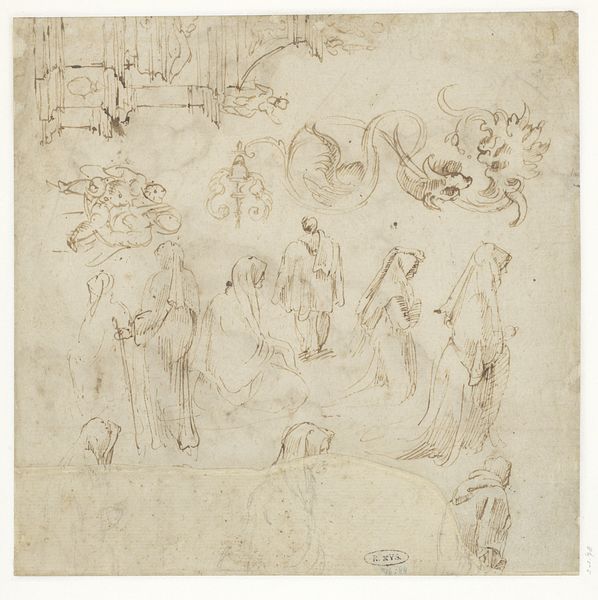
Studies for Grotesque Decorations (Recto); Small Sketches and Writing (Verso) 17th century
0:00
0:00
drawing, ornament, ink, pen
#
portrait
#
drawing
#
ornament
#
ink drawing
#
baroque
#
pen sketch
#
bird
#
figuration
#
ink
#
pen-ink sketch
#
men
#
pen work
#
pen
#
history-painting
#
nude
Dimensions: sheet: 14 1/4 x 8 9/16 in. (36.2 x 21.7 cm)
Copyright: Public Domain
Curator: Welcome. Here we have "Studies for Grotesque Decorations (Recto); Small Sketches and Writing (Verso)," an ink drawing created in the 17th century. Though its author remains anonymous, this work on paper offers a glimpse into the design practices of the Baroque era. Editor: Immediately, I see these nude figures poised amongst ornate, architectural fragments, and I feel this intriguing tension. They look fragile and exposed against the backdrop of presumed aristocratic excess. Curator: Precisely. Grotesque ornamentation, revived during the Renaissance and flourishing into the Baroque, often incorporated fantastical figures and classical motifs. They were used extensively in the architecture of churches and palaces to highlight elite status. Editor: It's fascinating how this drawing captures the period's fascination with antiquity while simultaneously showcasing the power and control asserted by those in positions of authority. Look at this, how does it serve socio-political functions, and for whom? The figures are clearly classical in form, while being made monstrous, placed under heavy architectural lines. It speaks to ownership, domination... Curator: Indeed, these decorative programs served as visual reminders of power. The "grotesque" style itself, though playful, carries connotations of the "other," the unconventional. The imagery becomes very popular after the Renaissance and Reformation: with people becoming literate, being able to formulate their own understandings of the world around them, new decorative styles began appearing in design, architecture, and in the decorative arts, making an implicit visual language for understanding history and power. Editor: And the placement of nude figures as structural elements? It certainly speaks to an objectification deeply rooted in the era’s social hierarchy and perhaps its power dynamics. Curator: Well, depictions of the nude had a complex role in 17th-century society. While rooted in classical traditions that celebrated the human form, their proliferation also intersects with issues of morality and sensuality in the art, reflecting an interest in exploring the limits of those visual vocabularies. We often miss, while trying to appreciate beauty in old art, the violence on those terms which underpinned the beauty of Baroque forms. Editor: Exactly! The grotesque embodies that struggle and its translation. In its construction and visual vocabulary of domination, we get an incredible, if painful to unpack, artifact to try to understand the making and control of those in power in society. Curator: A compelling observation, that highlights the complexity of historical visual language. Editor: I see the history of these dynamics reflected in these grotesque decorations: in how we view ourselves, how we consume imagery, and, unfortunately, in how certain bodies remain sites of societal control. This artwork shows us a deep visuality.
Comments
No comments
Be the first to comment and join the conversation on the ultimate creative platform.

